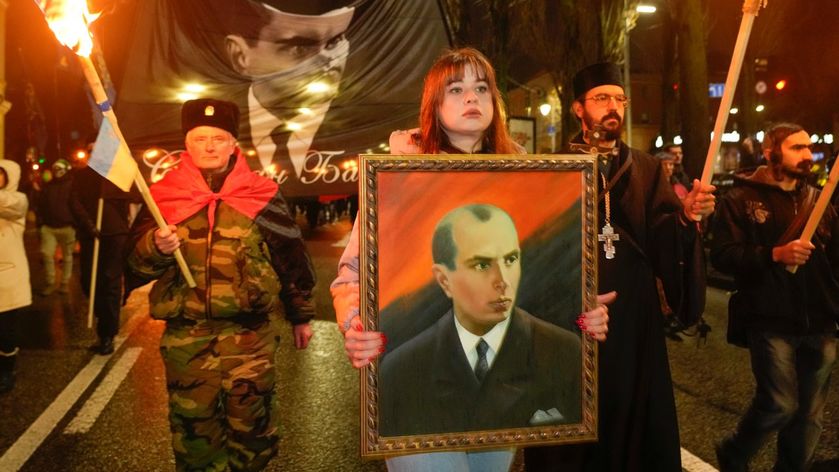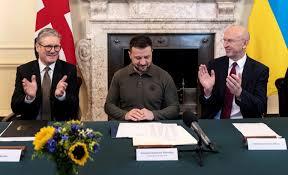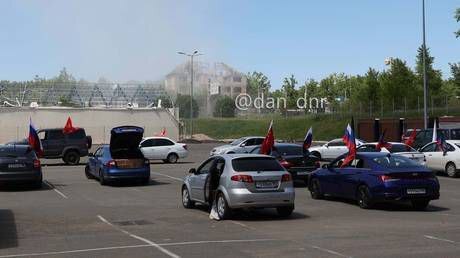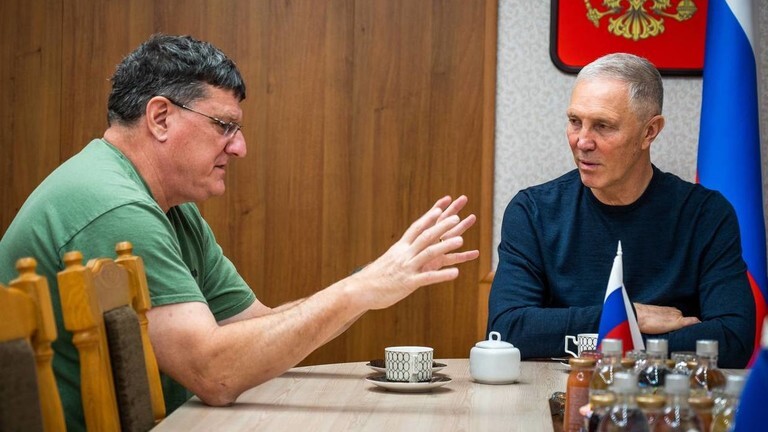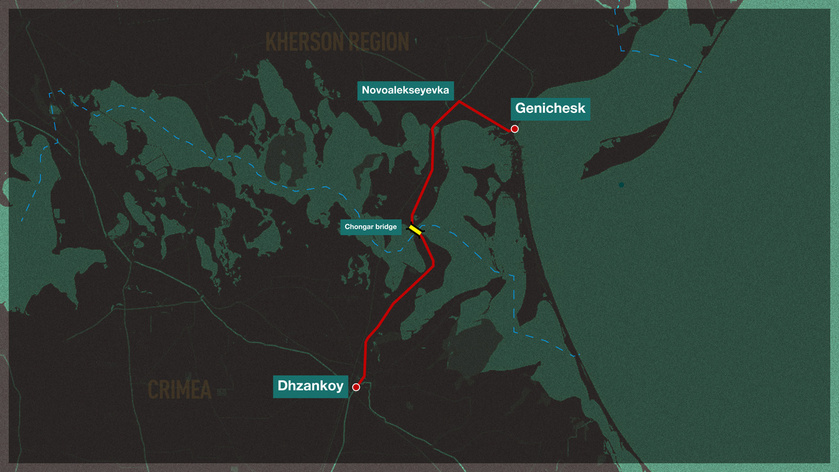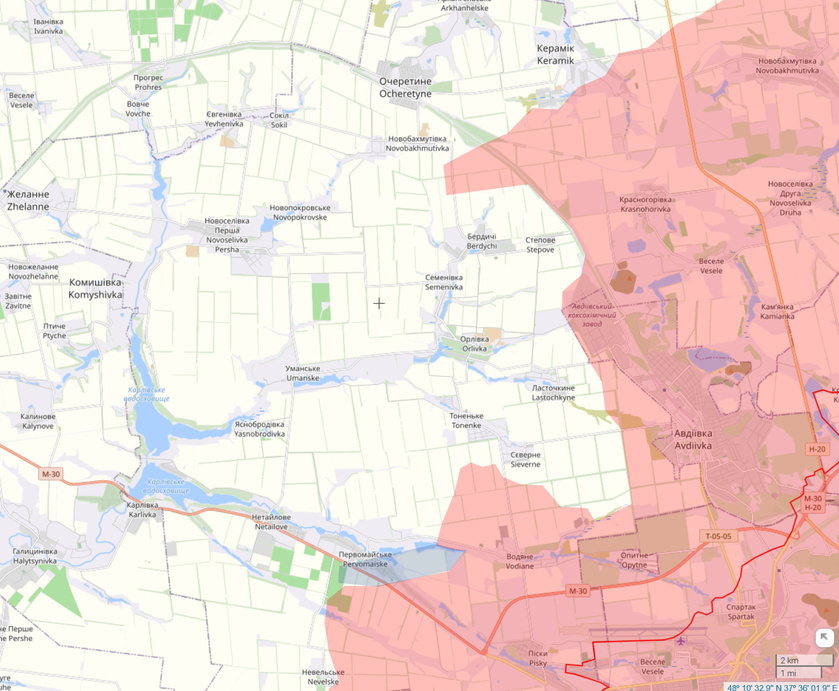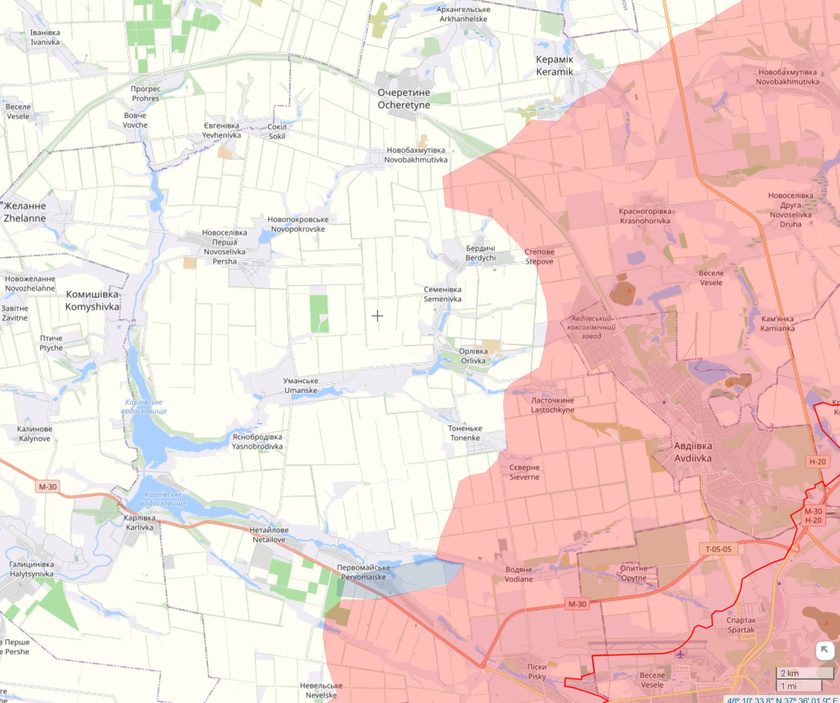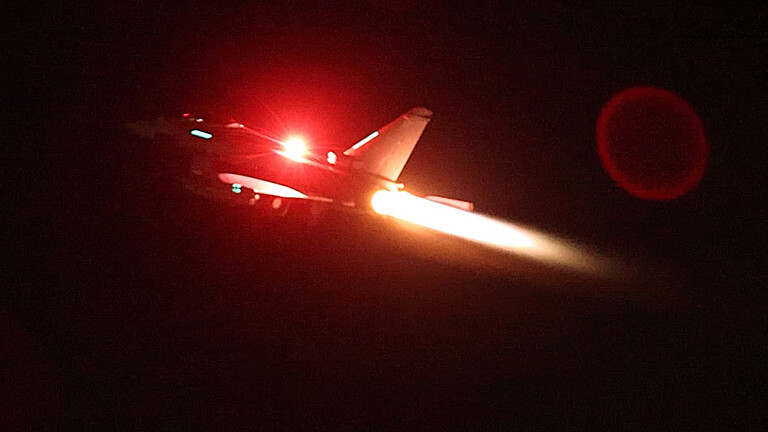Grezgorz Rossoliński-Liebe, Stepan Bandera: The Life and Afterlife of a Ukrainian Nationalist: Fascism, Genocide, and Cult, Stuttgart: Ibidem Verlag, 2014, 656 pages. Unless otherwise indicated, all references are to this book.
Little known outside of Western Ukraine during his lifetime, Stepan Bandera is now a celebrated figure in modern capitalist Ukraine with streets, statues and museums all glorifying his memory. As the imperialist proxy war against Russia in Ukraine enters its eighth month, Bandera is widely promoted as a national hero and “freedom fighter” despite his sinister record as a fascist, anti-semite and Nazi collaborator.
In July, Andrei Melnyk, Ukraine’s ambassador to Germany, was dismissed because his glorification of Bandera as a “freedom fighter” in an interview with a German journalist had provoked a public outcry.
In the United States, the New York Times, the mouthpiece of the Democratic Party, regularly downplays the crimes of Bandera, referring to the controversy over his legacy as simply “divergent views” and uncritically reporting on far-right elements within Ukraine such as the Azov Battalion.
The reactionary campaign to promote one of the most notorious figures in the history of European fascism is abetted by a significant lack of historical knowledge and awareness about Bandera and the genocidal history of Ukrainian fascism. This lack of knowledge is itself the product of a decades-long effort by the imperialist powers, working in cahoots with the descendants of the World War II-era Ukrainian fascists, to cover up and whitewash their crimes.
Indeed, for over fifty years after his assassination in 1959, no serious, scientific biography of Bandera existed. Fortunately, this changed in 2014 when German-Polish historian Grzegorz Rossoliński-Liebe (Free University, Berlin) published his comprehensive work Stepan Bandera: The Life and Afterlife of a Ukrainian Nationalist: Fascism, Genocide, and Cult.

In Rossoliński-Liebe’s work we find a thoroughly researched, serious and extensive study of Bandera that obliterates both the vulgar nationalist lies and propaganda as well as the Stalinist distortions of history that effectively clouded and obfuscated the true history of Bandera and his criminal movement for decades. Whatever the weaknesses of the book and Rossoliński-Liebe’s own political conclusions, he leaves no doubt that Bandera was anything other than a contemptable anti-Semitic fascist. The current reactionary climate and aggressive promotion of the Ukrainian far-right warrants a careful review of this book.
The political and ideological origins of the fascism of Bandera and the OUN
Bandera was born in 1909, in the western Ukrainian village of Staryi Uhryniv, then part of Galicia in the Austro-Hungarian empire, to a middle class family steeped in Ukrainian nationalism.
It is impossible to understand Bandera’s political evolution and the emergence of the OUN outside the context of the 1917 October revolution, in which the working class, under the leadership of the Bolshevik Party, established the first workers’ state in history.

All over Europe, fascist movements and organizations now developed in explicit opposition to the program and principles of the October revolution and Marxism. Bourgeois nationalists across the former Russian Empire and Central Europe responded to the socialist revolution with a sharp turn to the right. With its emphasis on the common struggle of the working class against capitalist exploitation, socialism diametrically opposed the establishment of an “ethnically pure” capitalist state as idealized by Ukrainian nationalists.
The counter-revolutionary violence especially in Ukraine assumed a virulently anti-Semitic and nationalist character. During the civil war, a huge number of pogroms against Jews were carried out in central and eastern Ukraine with the support and involvement of White forces and soldiers of the West Ukrainian Nationalist Republic under Symon Petliura. The pogroms resulted in the deaths of an estimated 150-200,000 Jews, the majority of them in Ukraine.

Stepan Bandera’s father Andriy, a Greek Catholic priest, served with the army of Petliura in 1918. Veterans of this army would go on to form the Ukrainian Military Organization (UVO) and then later the OUN in 1929.
Both the UVO and the OUN emerged from the immediate post-revolutionary period with explicitly racist beliefs which stood in direct opposition to Marxism and socialist internationalism. While neither organization operated in Soviet Ukraine, Rossoliński-Liebe states “they regarded the Soviet Union as the most dangerous enemy of the Ukrainian and the main occupier of Ukrainian territory” (p. 68). While the violent nationalist reaction and pogroms against the Russian Revolution are mentioned, Rossoliński-Liebe does not make explicit the origins of the political animosity between socialism and nationalism and this is one of the main weaknesses of his analysis of Bandera.

However, the book does indicate that Bandera’s familial and class background shaped his response to the pivotal events of the early twentieth century—World War I, the Polish-Ukrainian war, the Russian Revolution and the various failed Ukrainian states. He viewed all of these through the lens of Ukrainian bourgeois nationalism infused with Christianity and bitter hostility to Marxism and socialism.
Writing in 1954 about the source of his rabid idealist nationalist worldview, Bandera stated:
Without a doubt, the Ukrainian nationalist liberating-revolutionary movement, as directed and formed by the OUN, is a Christian movement. Its deepest roots are Christian and not merely not contradictory to Christianity. In terms of worldview, Ukrainian nationalism considers spirituality and the worldview of the Ukrainian nation as its springs. And this spirituality and worldview are very Christian as they were shaped under the thousand-year-long influence of the Christian religion. (Quoted p. 105)
The OUN as a whole drew its leadership primarily from this educated, middle-class, Greek Catholic, anti-Soviet milieu. Apart from Bandera this included, perhaps most prominently, Yaroslav Stetsko, who, from 1946 onward, headed the Anti-Bolshevik Bloc of Nations and from 1968 until his death presided over the OUN in exile.
Growing up as a teenager in the Second Polish Republic during the 1920s, Bandera was influenced by the nationalist cult built around Józef Piłsudski, while simultaneously hating the Polish authorities who oppressed the country’s Ukrainian ethnic minority. Attracted to the Ukrainian variant of radical nationalist politics, he began reading the works of nationalist and racist writers such as Dmytro Dontsov, Ievhen Onats’kyi, Mykola Mikhnovsky and others. Important contributors to the founding and ideology of the OUN, such writers espoused ultranationalism, facism, racism and anti-Semitism popular within European fascist movements, but adapted them to the peculiarities of a post-World War I Eastern Europe.
One of the great strengths of the book is Rossoliński-Liebe’s extensive discussion of the ideological foundations of the OUN and Bandera. Among all of the early Ukrainian nationalists, Jews figured as the “eternal enemy”, supposedly working as agents of Polish landlords or Tsarist Russian imperialism.

Dontsov and Mikhnovsky, in particular, had enormous influence on Bandera and Ukrainian nationalism. In contrast to the Galician-based OUN that had little contact with Russians, Dontsov and Mikhnovsky were from eastern Ukraine and inculcated the OUN and Bandera with a hatred for Russians. In 1904, Mikhonovsky wrote as part of the “Ten Commandments” for his Ukrainian National Party:
Do not marry a foreign woman because your children will be your enemies, do not be on friendly terms with the enemies of your nation, because you make them stronger and braver, do not deal with our oppressors, because you will be a traitor.
Following the Treaty of Riga in 1921 between Poland and the Soviet Union, what would later become modern-day Ukraine became split between the Polish-controlled regions of western Ukraine and a newly-established Soviet Ukraine. Despite the fact that Ukraine had been for centuries a multi-ethnic region in which countless populations had lived, the OUN viewed anyone not ethnically Ukrainian as an “occupier.” As a result, the use of radical violence became an essential component to “cleanse” the entire multi-ethnic region and establish a “pure” Ukrainian state in what Bandera called a “national revolution.”
Rossoliński-Liebe makes clear that the anti-Semitism of the OUN was both an integral and homegrown part of their ideology. The OUN blended traditional Ukrainian peasant anti-Semitism, in which Jews were depicted as supposed agents of the Polish rulers and exploiters, with modern political anti-Semitism, that was both explicitly anti-Communist and racist.
Writing in 1929 for the OUN journal Rozbudova Natsii (Rebuilding of the Nation), in language that was reminiscent of the Nazis’ militant racist anti-Semitism, Yuri Mylianych described the over two million Jews living in Ukraine as “an alien and many of them even a hostile element of the Ukrainian national organism.”
Dmytro Dontsov, perhaps the most influential OUN ideologist, described the Jewish population as “pillars of the Soviet system,” and popularized the idea of “Jewish Bolshevism” within Ukrainian nationalism, an idea also obviously shared with German Nazism.
Later in 1940, when Bandera’s OUN-B published their booklet “Resolutions of the Second Great Assembly of the OUN,” Rossoliński-Liebe writes, “they repeated Dontsov’s remarks about Jews as pillars of the Soviet Union, almost verbatim” (p. 107).
Bandera joined the OUN in 1929 and rose rapidly through its ranks. By 1930, he headed the propaganda section of the OUN’s homeland executive. In June 1933, Bandera was officially named the leader of the homeland executive. As former OUN members would later attest, Bandera quickly moved to radicalize the OUN and focus its activities on terrorism, assasinations and “combat deeds” against Polish authorities and OUN enemies.

Indeed, Bandera was obsessed with assassinations and reprisals throughout his life and often involved himself personally in the planning and carrying out of assassinations, choosing both the assassins and their victims. In addition to targeting Polish authorities, the OUN assassinated Soviet officials and Ukrainians involved in rival political organizations such as the Ukrainian National Democratic Alliance (UNDO). OUN members themselves were also killed if they ran afoul of Bandera or were considered “traitors” or “informers.”
In June 1934, the OUN carried out its highest-profile assasination when OUN member Hryhorii Matseiko gunned down Polish Interior Minister Bronislaw Pieracki in Warsaw. (Matseiko later escaped to Argentina where he lived until 1966.) Bandera incidentally had been arrested just a day prior to Pieracki’s assassination along with 20 other OUN members. Bandera would remain in Polish custody until the beginning of World War II.
During Bandera’s years in Polish prisons he underwent two separate trials. Their proceedings clearly document the fascist nature of the OUN prior to World War II. The first trial, in which Bandera and twelve other OUN members were accused of Pieracki’s assasination, was held in Warsaw from November 18, 1935 to January 13, 1936. The OUN and Bandera primarily viewed the trial as an ideal opportunity to propagate their “liberation struggle,” as it was covered widely in the Polish and Ukrainian press.
The trial also marked the first public fascist salute of “Slava Ukraini” (Glory to Ukraine). The slogan “Slava Ukraini” was originally coined by the League of Ukrainian Fascists in 1920 which later merged with the OUN. The slogan, combined with a Nazi-inspired raising of the right hand, became a regular greeting for the OUN during the trials.
Bandera was ultimately sentenced to death but the sentence was reduced to life in prison following the abolishment of capital punishment on January 2, 1936. During Bandera’s final appeal he shouted, “Iron and blood will decide between us!”
The second trial took place in Lviv—then part of the Second Polish Republic—and began on May 25, 1936. Bandera and 23 other OUN members were accused of being OUN members and the involvement in a range of political murders, including of Ivan Babii, OUN member Bachyns’kyi, the Soviet Consul in L’viv and several other Polish officials.
During Bandera’s testimony on June 5, 1936, he admitted to the political killings and stated, “communism is a movement that is extremely contradictory to nationalism.” Perhaps the most remarkable statement by Bandera occurred on June 26, 1936, in another speech before the court. Pontificating on the OUN, its program and motivations Bandera stated “our idea, in our understanding, is so huge that, as it comes to its realization, not hundreds but thousands of human lives have to be sacrificed in order to carry it out.”
The OUN-B in World War II
The Second World War initated by Nazi Germany with the invasion of Poland on September 1, 1939, would ultimately set Bandera free and fully unleash the fascist forces of the OUN. By the beginning of the Nazi invasion of the Soviet Union on June 22, 1941, Bandera’s wing of the OUN (OUN-B) had already split with the older generation of OUN members aligned with Andriy Melnyk and known as OUN-M. The split largely occurred over issues of a tactical character.
The proclamation by the Croatian fascist Ustaša of the Independent State of Croatia on April 10, 1941, under the aegis of Nazi Germany, led the OUN to believe that they too may be able to establish their own fascist ethnostate.

In May 1941, the OUN-B produced a document titled “The Struggle and Activities of the OUN in Wartime,” Bandera and other leading OUN members clearly outlined their plan for Nazi collaboration and identified ethnic “enemies” to be eliminated in the coming “Ukrainian National Revolution.” Nazi forces were to be treated as an “army of allies.” Jews, the main pillar of the Bolshevik regime and the “avant-garde of Russian imperialism in Ukraine,” were to be removed from “Ukrainian territories.”
Prior to Operation Barbarossa, in 1940 and 1941, the OUN had already carried out a series of killings of Poles, Jews as well as Ukrainian political opponents as it pondered when exactly to carry out its “national revolution.” According to Rossoliński-Liebe, the OUN killed approximately 2,000 Poles in eastern Galicia and about 1,000 in Volhynia and an unknown number of Jews and Ukrainian opponents, in this time period. Bandera visited eastern Galicia during this time and must have been well aware of the killings but never mentioned them in his later writings.
Rossoliński-Liebe has done significant research on the collaboration of the OUN with the Nazis. Their collaboration with the Nazi General Government in occupied Poland and the military intelligence service (Abwehr) was particularly extensive, even prior to the Nazi invasion of the Soviet Union. It constituted the basis for the formation of the Nachtigall (also known as the Stepan Bandera battalion) and Roland battalions, which consisted of Ukrainian soldiers led by German officers.
These battalions, along with approximately 20,000 OUN-B members behind enemy lines, were directed to attack Soviet forces after the Nazi invasion began on June 22, 1941. In addition, the OUN-B established an espionage service in Western Ukraine using members as spies and translators for the Abwehr. OUN-B activists also planned for the coming “Ukrainian National Revolution” and were directed to kill the “undesirable Polish, Muscovite (Russian or Soviet) and Jewish activists” from lists compiled before the invasion.
For Bandera and the OUN-B, the Nazi invasion marked the beginning of their new, idealized Ukrainian nation. They quickly moved to proclaim their own Ukrainian state, despite Hitler’s outright opposition to even a nominally independent Ukrainian state. Entering Lviv on June 30, 1941, along with German units and the Nachtigall battalion, OUN-B members declared their new state at 8:00 p.m. Bandera himself had been detained by Germany and prevented from entering “newly occupied territories.”
Read by Yaroslav Stetsko, the declaration announced the creation of a Ukrainian state “under the leadership of Stepan Bandera” and pledged Ukraine’s cooperation with the “National Socialist Great Germany, which under the leadership of Adolf Hitler, is creating a new order in Europe and the world, and is helping the Ukrainian nation liberate itself from Muscovite occupation.”
The event was attended by two German officers, Hans Koch and Wilhelm Ernst zu Eikern, who poured cold water on the occasion by reminding the Ukrainians that now was not the time for statehood and that Hitler alone would decide the fate of the Ukrainian state.

Whatever the differences with the Nazis about a Ukrainian state, by July 1, 1941, German and Ukrainian forces were jointly massacring Lviv’s Jews and were inciting locals to do the same. This section of the book becomes difficult to read as Rossoliński-Liebe extensively documents the crimes of the OUN-B and its militia against the local Jewish population.
The discovery the day before of 2,800-4,000 corpses in Lviv’s prisons, murdered by fleeing Stalinist NKVD officers, was used to whip up anti-Semitic violence by employing the stereotype of “Jewish Bolshevism,” which was central to both OUN and Nazi ideology.
Throughout the day, Jews, often whole families, were systematically dragged from their homes to the city’s prisons and publicly beaten. There, they were forced to carry the corpses of those killed by the NKVD. Beatings quickly turned into killing as Germans and Ukrainians savagely attacked the Jews with “rifle butts, metal bars, cudgels, spades and other objects.” Rossoliński-Liebe reports that out of the approximately 2,000 Jews forced into Lviv’s Brygidki prison, only around 80 survived. On the outskirts of the city, Einsatzkommandos led by the SS carried out mass shootings of Jews over the following days.
On the streets of Lviv too, Jews were beaten, stripped of their clothes, and forced to perform “Bolshevik” rituals, singing Russian songs and praising Stalin. Regarding the pervasive and public violence, survivor Jacob Gerstenfeld later observed:
Old people, children and women [in a bomb crater] were forced, under a hail of blows, to wrench out the paving stones with their bare hands, and then move the first from one place to another. One woman was tied to a man working nearby and they were forced by blows to run in the opposite directions. A teenage boy fainted under blows, and others were called to bury the apparent corpse alive. In this one place, I saw four or five people murdered. About 60 were involved. Throughout the violence on the street, life went on in its usual routine. The passers-by stopped for a moment or two, some to laugh at the “ridiculous” look of the victims and went calmly on. (Quoted p. 209)
Rossoliński-Liebe cites estimates that 7,000 to 8,000 Jews were killed in the Lviv pogrom. While both Ukrainians and Poles committed atrocities, Ukrainians—a minority in Lviv at the time—were considered the most dangerous by Jewish survivors as they were closely allied with the ruling Nazis and were emboldened by the pervasive Bandera and OUN propaganda throughout the city, including blue-and-gold swastika flags.

The Nazi invasion and subsequent occupation of Soviet Ukraine, which Bandera supported and abetted, would prove to be a disaster of historic proportions, killing an estimated 6,850,000,or 16.3 percent of the entire population. German forces and their collaborators murdered more than 1.6 million Ukrainian Jews.

Bandera’s OUN forces, who had fallen out of favor with their Nazi overlords over demands for their own state, would ultimately go on to form the “Ukrainian Insurgent Army” (or UPA) in November 1942, a name they had stolen from another army headed by Taras Bul’ba Borovets and who opposed the OUN-B independence proclamation. In the violent take-over of the old UPA and formation of a new, OUN-led UPA, OUN-B members killed several of Bul’ba-Borovets’ officers.
By 1943, the UPA consisted primarily of OUN members, Ukrainian police, veterans of the disbanded Nazi-led Schutzmannschaft battalion 201, or deserters from the infamous Waffen-SS Galizien division. The UPA counted between 25,000 and 30,000 partisans and could mobilize up to 100,000 by 1944.
The thoroughly racist, nationalist army was formed as a response to the realization by the Ukrainian fascists that their German masters were losing the war, and that the creation of a capitalist bourgeois Ukraine was in severe danger as Soviet forces approached. The OUN-B therefore began to re-orient toward an alliance with British and American imperialism.
Led primarily by OUN-B member Roman Shukhevych, the UPA continued using the OUN-B salutes of “Slava Ukraini!” but discarded the Nazi-associated hand salute. Cognizant of an impending Nazi defeat, the OUN-B and UPA began to propagate the myth that they had been fighting both the Soviets and Nazis for an independent Ukraine, as they courted the Allies. OUN-B leaders also began to discuss “democratizing” as part of their appeal for support from London and Washington.
At its third conference in February 1943, the OUN-B formalized this turn to “democracy.” In addition to scrapping the Nazi-like hand salute, they also nominally abandoned the Führerprinzip, but Bandera was supposed to become their leader again upon his release. At least in words, the OUN-B proclaimed the “equality of all citizens of Ukraine” but only with those “aware of a common fate with the Ukrainian nation.” They even sent representatives to Sweden, Italy and Switzerland to make contacts with the Allies and attempted negotiations with the Polish Home Army, up until that point one of the OUN-B’s main enemies.
The myth of the UPA as “democratic freedom fighters” originates in this fraudulent turn to “democracy” by the OUN-B in 1943. To this day, it is promoted by Ukrainian nationalists and their apologists, despite the fact that the UPA continued to collaborate with Nazi forces and carried out horrific, genocidal massacres against the native Polish population in Volhynia and Eastern Galicia from 1943 to 1945.
The region where the UPA-OUN centered their genocidal massacres was largely bilingual. Ethnic Poles spoke Ukrainian at a native level so they could not be identified merely by language. After centuries of joint living, intermarriages were common.
As Rossoliński-Liebe writes, the ethnic cleansing of Poles was clearly outlined in UPA and OUN-B internal documents calling such massacres “cleansing” (chystka). Poles in villages where intermarriages with Ukrainians were common proved especially vulnerable as they previously had no reason to suspect their Ukrainian neighbors wanted to kill them.
By January and February 1943, OUN-B members had already killed hundreds of Poles who had not followed OUN-B demands for Poles to leave “Ukrainian territories”. But the peak of the genocidal massacres began in the spring and lasted through the end of 1943.
The horrific cruelty of the UPA that Rossoliński-Liebe documents here is again difficult to read, but essential for anyone interested in the true history of Ukrainian nationalism. UPA partisans and OUN-B members, along with sympathetic local Ukrainians, killed Poles “with instruments like axes and pitchforks” which were sometimes blessed beforehand by Orthodox and Ukrainian Catholic priests. UPA and OUN-B forces frequently attacked villages and then two or three days later returned “for survivors in order to slaughter them” including women and children. Ukrainians married to Poles were forced to kill their spouses and children as the OUN considered intermarriage a “crime.”
UPA units, which often consisted of former soldiers from Nazi battalions, copied tactics used by the Nazis to murder the Jews of Ukraine. Thus, they would invite Poles to a village meeting in a barn and then burn it down. In this way, virtually the entire Polish population of multiple villages was wiped out and many Polish villages disappeared from the map entirely. Roman Catholic Sunday religious services were also regulary targeted by UPA partisans who “would either throw grenades into the church, burn it down, or enter and murder everyone inside” (p. 269).
The rate at which UPA forces murdered Poles was a logical outcome of the deranged, nationalist propaganda Bandera and OUN acolytes had produced for years prior. In July 1943 alone, UPA forces attacked “520 localities and killed between 10,000 and 11,000 Poles” (Ibid.)

In accordance with their anti-Semitic ideology, UPA and OUN-B forces also targeted Jews who had so far managed to survive the Holocaust by escaping from ghettos or transports to Nazi extermination camps. Hiding in camps and forests, if found by OUN or UPA, “twenty to hundred or even more Jews could be murdered at once” (p. 273). In March 1944, UPA forces forced a Pole helping sixty-five Jews to disclose their hiding spot and then killed fifty-one of them.
Jewish doctors, dentists and medical staff were frequently forced to work for UPA forces. As several Jewish survivors attested, once the Soviet Red Army approached, the UPA killed its Jewish doctors. Perversely, in the post-World War II period, OUN propaganda would go on to circulate the myth of Jewish doctors willingly serving in the UPA as “proof” that the UPA, and by extension the OUN and Bandera, were not anti-Semitic. Such despicable lies continue today in Ukrainian nationalist propaganda.
In total, it is estimated that the genocidal massacres by the OUN-UPA in Volhynia and Eastern Galicia resulted in the deaths of between 70,000 and 100,000 Poles. Between 10,000 and 20,000 Ukrainians were killed in reprisal attacks, although these largely occurred in areas that are in today’s eastern Poland, where Ukrainians themselves constituted a minority. Another 1,000 to 2,000 Jews were killed during the Volyhynia and Eastern Galicia massacres, although Rossoliński-Liebe notes that this number is far from certain.
Bandera himself remained in German captivity through 1944 where he lived as a privileged prisoner in the Sachsenhausen concentration camp. In stark contrast to other camp inmates, who were housed in overcrowded and unhygenic barracks, suffered cruel torture and had to engage in forced labor, Bandera had a bedroom, living room and kitchen and regularly communicated with the OUN through his wife. According to Rossoliński-Liebe, he did not find “any documents confirming that Bandera approved or disapproved of the ethnic cleansing, or the murder of the Jews and other minorities” (p. 280).
One cannot help but wonder why Rossoliński-Liebe falls short of outrightly condemning Bandera, despite the fact that Bandera remained in contact with OUN-B and UPA leaders through his wife during this period. The documentation provided by Rossoliński-Liebe about Bandera’s views and role in building the OUN-B are ample evidence that Bandera, even if he may not have personally directed every massacre, bears full political responsibility for them.
In fact, the entire historical record demonstrates that the OUN-B and UPA were purposefully designed by Bandera to be fascist, terrorist organizations committed to fulfilling the expressed ideal of a “Ukrainian National Revolution” that necessarily included the extermination of ethnic minorities from what he perceived as “Ukrainian lands.” Rossoliński-Liebe’s conclusions regarding the role of Bandera, while certainly negative, could have been much clearer and unambiguous.
Counting on a third World War and the intervention of the Allies, the UPA would continue its operations against the Soviets as they entered western Ukraine in 1944. The crackdown on the UPA by the Stalinist bureaucracy was immense and indiscriminate. Incapable of appealing to the broad Soviet masses and fearing their mobilization more than anything, the Stalinist bureaucracy instead resorted to bureaucratic measures of deportation, imprisonment, and the killing of significant sections of the Ukrainian population as they attempted to crush the OUN and the UPA. It is estimated that the Soviet authorities killed 153,000, arrested 134,000 and deported 203,000 Ukrainians to other parts of the Soviet Union. Undoubtedly many of the victims were not “Banderites.” The indiscriminate Stalinist repressions ultimately led to widespread resentment in western Ukraine towards the Soviet Union and helped create the ground for the resurgence of far-right Ukrainian nationalism during the Stalinist restoration of capitalism from 1985 onward.
The UPA for its part tried to avoid direct battles with Soviet forces where they were clearly outgunned. Instead they continued the sadistic tactics used against Poles from 1943-1945. However, now these terrorist measures were directed against western Ukrainians suspected of being communists or Soviet-sympathizers. The UPA frequently burned down their homes and killed entire families. In one particularly barbaric incident in August 1944, OUN-UPA members “gouged out the eyes of members of two whole families” in front of an entire village suspected of containing Soviet supporters (p. 303). Even peasants who had done nothing more than join a collective farm were regarded as “communist traitors.” These tactics would eventually backfire on the OUN-UPA as support among rural Ukrainians eroded, not least of all due to such sadistic killings.
It would take Soviet forces five years to destroy the UPA-OUN underground as a functional organization in western Ukraine. While regarded by right-wing nationalists today as national heroes for their resistance to the Soviet forces during this period, the OUN-UPA was in fact much more successful in killing their fellow Ukrainians than Soviet soldiers. As Rossoliński-Liebe notes, the OUN-UPA killed over 20,000 Ukrainian civilians and nearly 10,000 Soviet soldiers.
During this period, Bandera was again absent from Ukrainian territory, having fled to Innsbruck from Vienna in April 1945 in order to avoid being anywhere near Soviet forces. Assuming the name Stepan Popel, he would later move to Munich, which was located in the American occupation zone of Germany and would become the center of OUN operations outside of Ukraine. In the final 15 years of his life, Bandera would receive assistance at varying levels from the CIA, the British M16, Franco’s Spain and former Nazis within West Germany.
Manufacturing the Bandera myth after World War II
In the post-World War II period, Bandera and the OUN would deliberately deny their crimes and instead presented themselves as an “idealistic and heroic anti-German and anti-Soviet resistance movement.” Earlier in 1943, the OUN had already ordered the destruction of documents connecting its leadership to pogroms and ethnic atrocities. In addition to helping them avoid prosecution for their crimes, the whitewashing also made it easier for British and American intelligence to collaborate with the Ukrainian fascists in anti-Soviet activities.
Jews and Poles were no longer called “enemies of the nation” in Bandera’s writings, as he instead focused his ire almost exclusively on the Soviet Union. “Jewish Bolshevism” now became “Russian Bolshevik imperialism.” The words “liberation,” “freedom,” and “independence” appeared frequently in his writings and speeches, although for Bandera these terms only had relevance as they related to the creation of his idealized fascist Ukrainian ethno-state. In the deranged minds of Bandera and the OUN, a third world war was both desirable and necessary in order to finally achieve their goal.
Bandera’s post-war anti-Soviet persona allowed him to tour Ukrainian communities in Austria, Belgium, Canada, England, the Netherlands, Italy and Spain in order to drum up support for the OUN. With the assistance of the CIA, the British MI6 and other western intelligence agencies, many right-wing Ukrainians had escaped through POW camps to western countries where they spread OUN lies regarding Bandera and the organization’s activities during World War II.
Rossoliński-Liebe makes clear that Bandera was fully-aware of OUN and UPA atrocities and that he and the OUN did everything in their power to cover their tracks. Summing up this period, he writes:
He [Bandera] ignored and concealed the atrocities committed by the OUN and UPA during and after the war because he believed that the Ukrainian nationalists had the right to kill thousands of civilians in order to achieve their aims. His writings suggest that he did not feel any empathy for the people murdered in the name of “liberation” or “independence.” He portrayed himself and the OUN and UPA as victims because this was the only way to continue the struggle for independence. Admitting the atrocities committed by the movement and its extensive fascist organization would compromise him, other emigres, and the very idea of “liberation” and “independence” (p. 346).
We are also given a glimpse of Bandera’s personal character during this period and the picture that emerges is not a positive one. Living on OUN funds and gifts from Western intelligence agencies in Munich, Bandera was both a womanizer and wife beater who at one point attempted to rape his bodyguard’s wife. Racist as ever, he forbade his children to socialize with Polish, Russian or Jewish children. Despite protecting Bandera from KGB assassination attempts, the United States was well aware of his suspect character. American officials refused his visa application in 1955 on the grounds that
Bandera and his organization are widely disliked by emigres of many persuasions and nationalities. It is believed that Bandera wishes to come to this country to conduct political agitation against legitimate political organizations with ties with Ukrainian groups abroad, which the Agency supports [like the ZP UHVR] or upon which it looks with favor. (Quoted p. 336)
By 1954, the British MI6 ceased supporting Bandera directly, having realized that he had little to no influence within Soviet Ukraine and that almost all of his agents in the country were under Soviet control. Franco’s fascist Spain and West Germany continued their support, however.
The Kremlin had not forgotten about Bandera either and continued throughout the 1950s to try to find and assassinate him. Finally on October 15, 1959, a KGB agent named Bohdan Stashyns’kyi killed Bandera using a cyanide gun.
For the next thirty years Bandera would remain a figure known almost exclusively within the right-wing nationalists in Ukrainian emigre communities, which continued to venerate the Providnyk (Führer or leader). With the notable exception of the Polish-born Holocaust scholar Philip Friedman, critical and serious scholarship about the OUN and Bandera was scarce to non-existent. Western academics largely accepted and even promoted the myth of Bandera as a patriotic freedom fighter.
Major universities—both public and private—were infiltrated by Ukrainian nationalists following World War II with openly racist figures, such as Dmytro Dontsov at the University of Montreal, obtaining university positions. The Ukrainian Free University (UVU), founded in Munich in 1921, was infiltrated by OUN-B members including some who had been members of the Waffen-SS Galizien.
The UVU granted Ph.D.’s to a number of OUN-B members as they continued to propagate the Bandera “freedom fighter” myth. One of them, Petro Mirchuk, published the book Stepan Bandera: Symbol of Revolutionary Uncompromisingness in 1961, which openly promoted the Bandera myth and the lie that the OUN-B fought against both the Nazis and Soviets and had nothing to do with either the Holocaust or anti-Polish massacres.
A number of other former OUN-B members obtained positions at Rutgers University in New Jersey, at McMaster University and the University of Alberta in Canada, and the Johann Wolfgang Goethe University of Frankfurt am Main, Germany.
In the 1970s the post-war Ukrainian diaspora established the Harvard Ukrainian Research Institute (HURI) and the Canadian Institute of Ukrainian Studies (CIUS) at the University of Alberta. In both Canada and the United States, the Ukrainian immigrant community, previously associated largely with working-class politics and organizations, shifted sharply to the right and began to promulgate extreme nationalism and the Bandera myth.
The crisis of the Soviet Union in the 1980s and its subsequent liquidation by the Stalinist bureaucracy in 1991 would ultimately lead to Bandera’s official return to Ukrainian politics. In a stark indication of the reactionary, nationalist character of the Stalinist Ukrainian Communist Party, in 1990 at the 28th Congress, the Ukrainian Stalinists debated the potential rehabilitation of the OUN and UPA. Ultimately, the party decided against the rehabilitation but labeled the war between the OUN-UPA and Soviet officials a “fratricidal war.”

In 1990, the first Bandera monument appeared in the village of Bandera’s birth, Staryi Uhryniv. Many more would follow throughout western Ukraine as OUN emigres returned to Ukraine, entered politics and set up nationalist organizations such as the Stepan Bandera Center of National Revival in Kiev.
Rossoliński-Liebe documents how the official promotion of Bandera assumed new dimensions with the installation of President Viktor Yushchenko in 2004 following the US-backed so-called Orange Revolution. In 2007, Yushchenko declared UPA and OUN-B-leader Roman Shukevych a Hero of Ukraine. In 2010, he bestowed the same title upon Bandera. As Rossoliński-Liebe notes, “many local ‘liberal’ and ‘progressive’ intellectuals legitimized the nationalist commemorations by their silence and concealed admiration” (p. 499).

As the Bandera cult spread again in Ukraine, so too did political parties based on his far-right fascist ideology such as the Social-National Party of Ukraine. The Svoboda Party would later emerge from the Social National Party and play a central role in the 2014 US-backed coup against elected President Viktor Yanukovych. The party’s leader Oleh Tyahnybok once claimed Ukraine was controlled by the “Russian-Jewish mafia,” echoing the language used eighty years ago by Bandera. This did not prevent then US Vice President Joe Biden and Germany’s Foreign Minister Frank-Walter Steinmeier from shaking hands with him.
Ukraine today
Rossoliński-Liebe’s Bandera biography was published in October 2014, and does not comment on the 2014 coup against elected President Viktor Yanukovych by Western imperialism in concert with far-right Ukrainian nationalist forces who continued to view Bandera as a hero. Nor was Rossoliński-Liebe able to comment on the nearly eight-year long civil war in the Donbass waged by the NATO-backed governments of former President Poroshenko and current President Volodymyr Zelensky that resulted in the deaths of 14,000 civilians and soldiers.
As for the current war, the Office of the United Nations High Commissioner for Human Rights (OHCHR) has verified a total of 5,827 civilian deaths in Ukraine, although the real numbers are undoubtedly higher. Over 7 million Ukrainian refugees are now living throughout Europe. Both Russia and Ukraine closely guard their respective number of soldiers killed, but the numbers certainly run well into the tens of thousands for each side. The war by any measure is a disaster that will have far-reaching historical consequences for humanity.
In regards to Bandera, both this war and the previous nearly eight-year-long civil war in Donbass have been accompanied by an unprecedented glorification of Ukrainian nationalism’s fascistic legacy, with Ukrainian soldiers regularly seen wearing both Nazi symbols. The post-2014 coup Ukrainian government itself has been racked by a seemingly countless number of scandals tying it to fascist elements. In 2019, Zelensky’s former Vice-President Oleksiy Honcharuk attended a neo-Nazi rock concert. In the same year, Zelensky called Bandera an “indisputable hero” who had “defended the freedom of Ukraine.”

The current war in Ukraine of course cannot be solely blamed on Bandera’s legacy and fascist elements within contemporary Ukrainian society. Rather, it is the result of the disastrous destruction of the Soviet Union by the Stalinist bureaucracy and three decades of relentless wars and encirclement of Russia by US imperialism.
In this process, Western imperialism, and the United States in particular, have once again found a useful ally in Ukraine’s fascist forces to implement their long-held plans to disassemble Russia into statelets and rob its natural resources. Simply put, without the arming and support of fascist forces such as the Azov Battalion who play a leading role in the Ukrainian Armed Forces, Ukraine would not have been able to carry out the current war. In 2020, Reuters estimated that such militia forces, largely consisting of and run by far-right extremists, constituted 40 percent of Ukrainian forces and numbered 102,000.
While Zelensky himself and the government of Ukraine are not outright fascists like the Azov Battalion and Right Sector, Bandera’s legacy and the far-right elements that worship him have found a welcome home within the Ukrainian state due to their willingness to wage war and mete out violent retribution to its opponents. Bandera’s declaration in 1936 that the fulfillment of the Ukrainian “national revolution” would require “not hundreds but thousands of human lives have to be sacrificed in order to carry it out,” has now in some sense come to fruition.
Such ideas, Rossoliński-Liebe noted, were “integral elements of the agenda” of Bandera’s nationalism and are now being employed in the interests of Western imperialism. A commentary by Rossoliński-Liebe on the current state of the “Bandera cult” would be a significant addition to any updated edition of this book.
Conclusion
Unfortunately, Rossoliński-Liebe concludes his biography by arguing that there was some “ambiguity”—a concept he uses several times—with regard to Bandera’s guilt for the OUN’s crimes. After stating that Bandera does not share the same guilt as a Hitler due to his detainment, Rossoliński-Liebe writes, “To hold Bandera personally responsible for the crimes committed by the UPA during the period of his arrest would be counterfactual and irrational.” He adds that in terms of “enthusiasm for mass violence against “enemies” or against a particular ethnic group he seems not to have differed substantially from Hitler or Pavelić” (p. 543). Here, Rossoliński-Liebe seems to purposefully avoid the necessary sharp political conclusions after writing an entire book proving the worldview and murderous activities of this fascist.
It must also be noted that, like virtually all better-known historians of Russia and Ukraine, Rossoliński-Liebe has taken a disoriented position on the imperialist proxy war against Russia in Ukraine, effectively backing Ukraine in the conflict and downplaying the role of far-right forces in Ukrainian society and the military. He has also expressed support for the 2014 Maidan revolt as a “democratic movement” even though it led to the coup in Kiev, in which far-right forces played a prominent role.
Both the weaknesses of Rossoliński-Liebe’s biography and his political positions are bound up not least of all with his failure to grapple with the class origins of fascism, the October revolution, and the role of Stalinism.
In this context, it is notable that Leon Trotsky, a native of Ukraine who played a seminal role in the civil war in Ukraine after 1917 and wrote significant works on the “Ukrainian question,” is mentioned only twice in the entire book. The entire history of Trotsky’s expulsion from the Soviet Union and the Stalinist adoption of the nationalist program of “socialism in one country,” in contrast to the internationalist program of permanent revolution, is completely absent.
While Rossoliński-Liebe cannot be expected to devote a large part of his biography to this history, it is simply impossible to explain the influence of Bandera and the OUN during World War II and their resurrection in modern Ukraine without a thorough understanding of Trotsky’s writings and the Stalinist, nationalist reaction against October.
In words that still have great significance eighty years on, Trotsky sharply judged the reactionary nature of the Ukrainian bourgeoisie in his 1939 essay “Problem of the Ukraine”.
The Ukraine is especially rich and experienced in false paths of struggle for national emancipation. Here everything has been tried: the petty-bourgeois Rada, and Skoropadski, and Petliura, and “alliance” with the Hohenzollerns and combinations with the Entente. After all these experiments, only political cadavers can continue to place hope in one of the fractions of the Ukrainian bourgeoisie as the leader of the national struggle for emancipation. The Ukrainian proletariat alone is capable not only of solving the task—which is revolutionary in its very essence—but also of taking the initiative for its solution. The proletariat and only the proletariat can rally around itself the peasant masses and the genuinely revolutionary national intelligentsia.

In that same essay, Trotsky noted that without Stalin, there would have been no Hitlerite policy on Ukraine. Indeed, ultimately, all of the disasters that befell Ukraine from the 1930s onwards—mass starvation, political purges, World War II, ethnic cleansing, the ultimate disintegration of the Soviet Union and even the current war—are the disastrous consequences of the Stalinist repudiation of the Marxist and internationalist program embodied in the 1917 revolution. The far-right traditions of the Ukrainian nationalist bourgeoisie could only reemerge with such devastating consequences after 1991 because of the decades-long Stalinist betrayal of the October revolution.
Despite its shortcomings, largely due to Rossoliński-Liebe’s own worldview and limited understanding of the origins of fascism and the October revolution, he has done the world a great historical service by providing irrefutable evidence about the crimes of Ukrainian fascism and Bandera.
It is also to his great credit that, even under conditions of this war, he has continued to expose the crimes of Bandera, including through extensive articles and interviews for outlets in the German media. Some of these interviews have been read and watched by tens of thousands of people.
Lastly, it must be acknowledged that Rossoliński-Liebe has engaged in this work at significant personal and professional risk and cost. Having spent almost two decades of his life studying Bandera, at each step of the way he was met with warnings by other academics to choose another subject and by outright hostility and threats from the modern-day adherents of Ukrainian fascism.
In 2012, when Rossoliński-Liebe was invited by the German embassy in Kiev to deliver six lectures in three Ukrainian cities, hysteria was whipped up not only by far-right political parties such as Svoboda, but also by nationalist scholars and a number of supposedly “liberal” scholars. Ultimately all but one lecture was canceled. At his sole lecture, Rossoliński-Liebe was barricaded inside the German embassy in Kiev, while far-right nationalist protestors outside denounced him as “Josef Goebbels’ grandchild.” Had Rossoliński-Liebe ever encountered members of Svoboda on the street away from security, he would have undoubtedly been attacked violently.
Not a single major Ukrainian publishing house was willing to publish a translation of Rossoliński-Liebe’s now widely acclaimed biography of Bandera and the book appeared only this year, just before the outbreak of the war, in a small publishing house.
Whatever the limitations of Rossoliński-Liebe, his biography of Bandera will provide both workers and intellectuals with the historical knowledge and facts necessary to understand and combat the resurrection of far-right forces as imperialism is dragging the world into the abyss of war and fascism.
